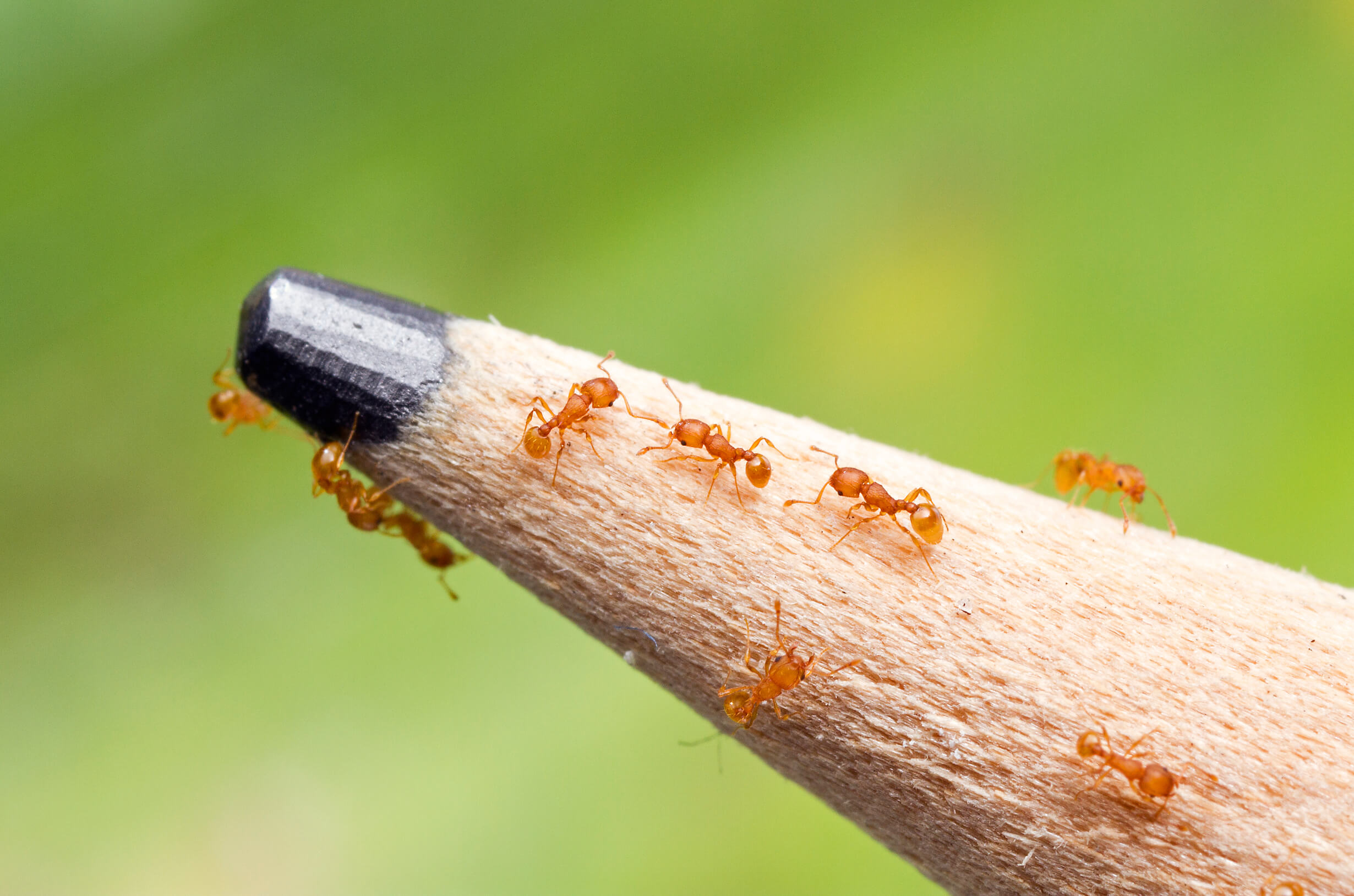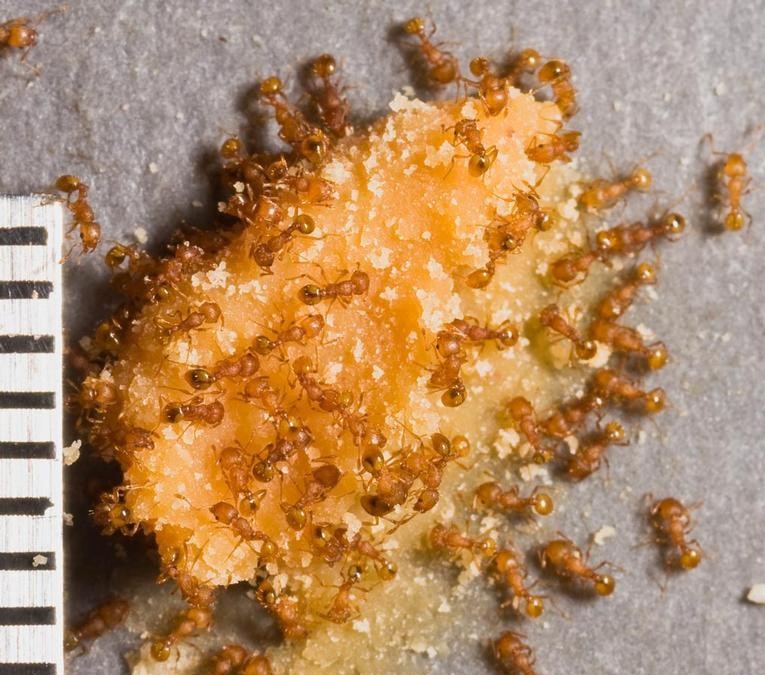Electric ant
The exotic pest commonly known as the electric ant or little fire ant (Wasmannia auropunctata) was detected in Queensland in May 2006 at Smithfield in Cairns. It has since been found in several other areas in Far North Queensland.
Biosecurity Queensland is undertaking an electric ant eradication program — for the latest information, visit the Department of Agriculture and Fisheries website.
Electric ant has not been detected in Victoria.
If you think you've found electric ants
To report suspected electric ants, call the Exotic Plant Pest Hotline on 1800 084 881. Early reporting increases the chance of effective control and eradication.
Alternatively, you can make a report via our online form with a photo (where possible).
What electric ants look like
- Electric ants are not easily detected. These golden-brown ants are tiny (~1.5 mm long) and slow-moving (Figure 1).
- Unlike red imported fire ants, electric ant workers are all the same size (Figure 2).
- The ants don't have a distinctive nest or mound and tend to nest under leaf debris and stones, potted plants, in rotten limbs or in trees. They have been known to nest in houses, infested beds, furniture and food.
- Electric ants produce painful, long-lasting stings. In rare cases, it might cause a severe allergic reaction (anaphylaxis).
- The ants have been known to attack pets, as they are attracted to pet food.

Importing host materials into Victoria
To prevent the importation of electric ants into Victoria, we introduced restrictions on the movement into Victoria of any material capable of harbouring electric ants.

See the Plant Quarantine Manual for a description of these requirements.
For more information, contact one of our plant standards officers:
- call (03) 8371 3500
- fax (03) 9687 6746
- email plant.standards@agriculture.vic.gov.au
Where electric ants are found
The electric ant is native to Central and South America, but has established in:
- the West Indies
- West Africa
- Galapagos Islands
- French Polynesia
- New Caledonia
- the Solomon Islands
- Israel
- Hawaii
Its impact is similar to red imported fire ants, in that it injects a powerful venom when it stings.
How electric ants can spread
Electric ants spread mostly through human activity with the movement of plants, plant products, garden waste or edible material. Once the ant has established it is known to spread up to 170m per year, with a more typical rate range of 0 to 25 metres per year depending on the environment.
More information
Photo credits
Figure 1 © Alexander Wild
Figure 2 Eli Sarnat, PIAkey: Invasive Ants of the Pacific Islands, USDA APHIS PPQ, Bugwood.org
Reporting an unusual plant insect pest or disease
Report any unusual plant pest or disease immediately using our online reporting form or by calling the Exotic Plant Pest Hotline on 1800 084 881. Early reporting increases the chance of effective control and eradication.
Please take multiple good quality photos of the pests or damage to include in your report where possible, as this is essential for rapid pest and disease diagnosis and response.
Your report will be responded to by an experienced staff member, who may seek more information about the detection and explain next steps.
Report online